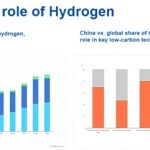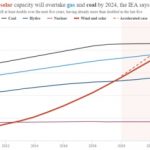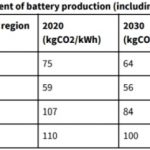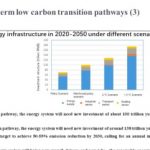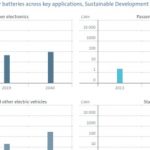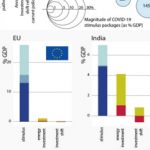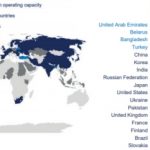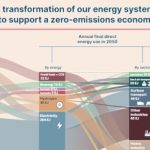Existing national commitments imply that today’s emissions will simply plateau, remaining only slightly below 2019 levels by 2030. However, according to the latest UN Environment Programme (UNEP) emissions gap report, the new commitments from China, the EU, Japan, South Korea, the UK, Joe Biden’s US and others are “broadly consistent” with the Paris Agreement’s 1.5C goal for 2050. But commitments aren’t policy, warns UNEP, and only real change … [Read more...]
The top Clean Energy developments of 2020
The world is still a long way off the pathway to meeting our emissions goals. But 2020 saw a number of major steps in the right direction. Laurie Stone at RMI presents a list of what has been achieved and which trends and new policy commitments are pointing us towards a much needed faster transition. They include coal’s decline, wind and solar’s growing competitiveness (even compared to gas), the promise of green hydrogen, bans on gas/petrol … [Read more...]
How can Europe help build China’s Hydrogen economy?
On 18th November Energy Post, in partnership with the EU-China Energy Cooperation Platform, hosted a series of online workshops under the theme “China: Carbon Neutral by 2060”. The purpose was to understand the Chinese landscape and uncover opportunities for Europe. Here, the moderator for our “Hydrogen” panel, Gökçe Mete, summarises the workshop which included an expert panel discussion and questions from the audience. Taking part were Tudor … [Read more...]
Nuclear: Does the West’s military need Small Modular Reactors?
The development of small modular nuclear reactors (SMRs), generating up to 300MW, are already getting support for civilian purposes. The military in Russia, China and the U.S. are also interested. It should reduce the reliance on long fuel supply lines, the defence of which costs lives. SMRs would be factory made and delivered on site. But Lukas Trakimavičius says many difficult questions must be answered before the West commits to this solution. … [Read more...]
IEA’s “accelerated case” becoming the norm? Global Wind + Solar to overtake Gas and Coal by 2024
The IEA’s 2019 “accelerated case” for renewables is turning into this year’s “main case”. It predicts that Wind and Solar capacity combined will overtake both Gas and Coal globally by 2024. Josh Gabbatiss at Carbon Brief summarises the IEA’s Renewables 2020 report. Within five years, renewables will constitute 1/3 of all electricity generation, equivalent to the combined demand of China and the EU. Virtually all global growth in electricity … [Read more...]
Create new laws to help bring Battery manufacturing to Europe
Europe should start leading battery manufacturing instead of leaving it to China, argue Alex Keynes and Cecilia Mattea at Transport & Environment. With laws spreading across the continent to make electric vehicles compulsory for new car purchases, this is a growing and strategic market. But a firm grip on battery manufacture emissions, as well as ethical sourcing and recycling, has to be part of the plan. The authors give a template of what … [Read more...]
Chinese energy institutes present new net-zero scenarios for 2050
It was just one sentence, in September, from China’s President Xi Jinping: “We aim to have CO2 emissions peak before 2030 and achieve carbon neutrality before 2060.” Already, leading Chinese energy institutes have presented two scenarios that lay out what needs to be done to meet that goal. Writing for Carbon Brief, Lauri Myllyvirta reviews the plans. Both aim for over 85% of all energy and more than 90% of electricity coming from non-fossil … [Read more...]
Battery innovation must drive the 50-fold increase in storage capacity needed by 2040
The IEA has set the storage sector a challenge. It says the world will need 10,000 GW-hours of batteries and other forms of energy storage by 2040, a 50-fold increase on today. The good news is that a joint study by the European Patent Office and the IEA reveals electricity storage patenting activity has grown 14% a year over the past decade. Here the IEA summarises the findings of its comprehensive report. It explains that Japan and Korea lead, … [Read more...]
Analysis shows Wind and Solar costs will continue to fall dramatically throughout the 2020s
Michael Taylor at IRENA has summarised its latest studies that show how the cost of renewables are set to continue declining dramatically through to 2030. We all know how those costs declined in the last ten years. Going forward, the weighted average cost of electricity in the G20 countries from offshore wind could fall by almost 50% by 2030 from 2019 levels, onshore wind by around 45%, utility-scale solar PV by up to 55% and concentrated solar … [Read more...]
How will China build its Hydrogen economy?
What are China’s hydrogen prospects? That’s the question Kevin Tu at the IFRI Center for Energy & Climate attempts to answer in a report that he summarises here. He points at the growing number of policies that show China is taking hydrogen very seriously. China wants to expand production as well as build up end uses in transport, steel and cement manufacturing, and storage. The main drivers are the Covid pandemic, energy security, the … [Read more...]
The energy transition needs some of the $12tn global Covid stimulus. But much less than you think
Governments worldwide have committed over $12tn to recover from the Covid-19 pandemic, spent over the next 5 years. Current estimates say the energy transition needs $1.4tn/year globally between 2020 and 2024 to get us on the path to meet the 1.5oC Paris goal. Clearly, there is an opportunity here. Although support for healthcare systems and the overall economy are the stated priority of governments, much of that $12tn is still not committed. … [Read more...]
U.S. Nuclear: change the laws that constrain foreign and domestic investment
Today, Russia and China dominate global nuclear exports and new additions while the U.S. experiences budget overruns and cancellations. Once at the forefront, the U.S. should regain its leadership of nuclear power, argue Matt Bowen, Jennifer Gordon and Jackie Kempfer at the Atlantic Council. To recover its position it first needs to change the laws and policies that constrain its ability to cooperate with allies on nuclear matters, invest in … [Read more...]
China’s new net zero emissions target for 2060: why now, and how?
China’s promise of peak emissions before 2030 and net zero by 2060 is a major and welcome step for the economic (and fossil fuel) powerhouse. Better still, the rest of the world doesn’t need to make concessions to get China to stick to the new target, says John Seaman at the IFRI Centre for Energy & Climate. That’s because an energy transition is in China’s interests. It wants and needs to be at the forefront of new energy technologies to … [Read more...]
Net Zero by 2050 technically and economically achievable, says Energy Transitions Commission report
Making Mission Possible, the latest report by the Energy Transitions Commission, describes a net-zero world by mid-century as technically and economically possible. The solutions are already available or close to being brought to market. What is still missing is the will to embrace, rapidly and at scale, the inevitable disruption that will ultimately deliver net-zero emissions, lower air pollution, cheaper energy bills, create new jobs and raise … [Read more...]
Gas oversupply and clean energy’s rise: now is the time to fast-track gas market reforms
Traditional monopolistic and oligopolistic gas markets artificially keep gas prices high, work against competition and efficiency, and have no place in the modern world, say Jean-Baptiste Dubreuil, Gergely Molnar and Songho Jeon at the IEA. They calculate that gas market reforms in the EU, begun in the mid 1990s, saved the bloc $15bn in 2019. But it typically takes 20 years for such a market to be properly established. The authors explain that … [Read more...]
- « Previous Page
- 1
- …
- 8
- 9
- 10
- 11
- 12
- …
- 15
- Next Page »




